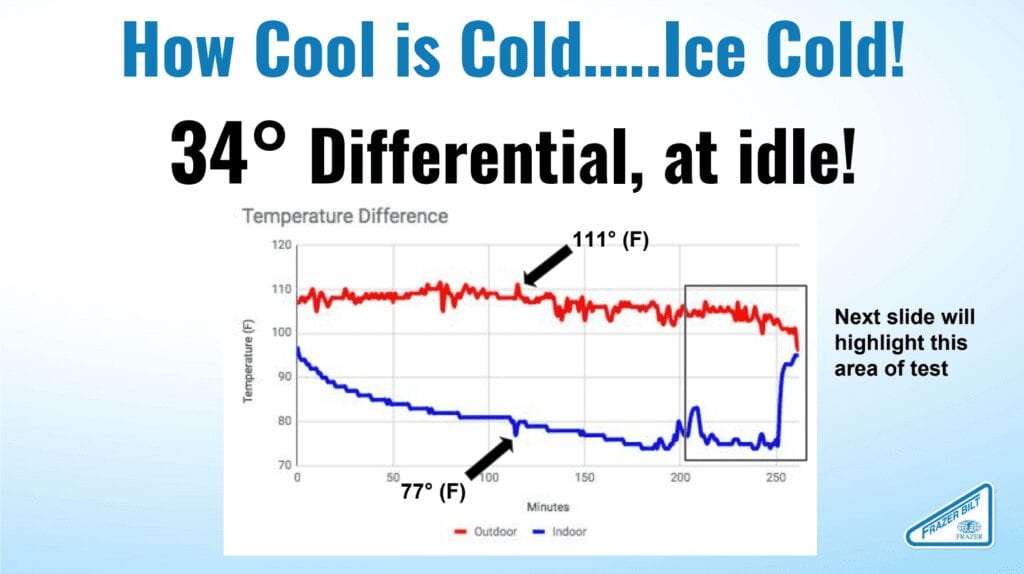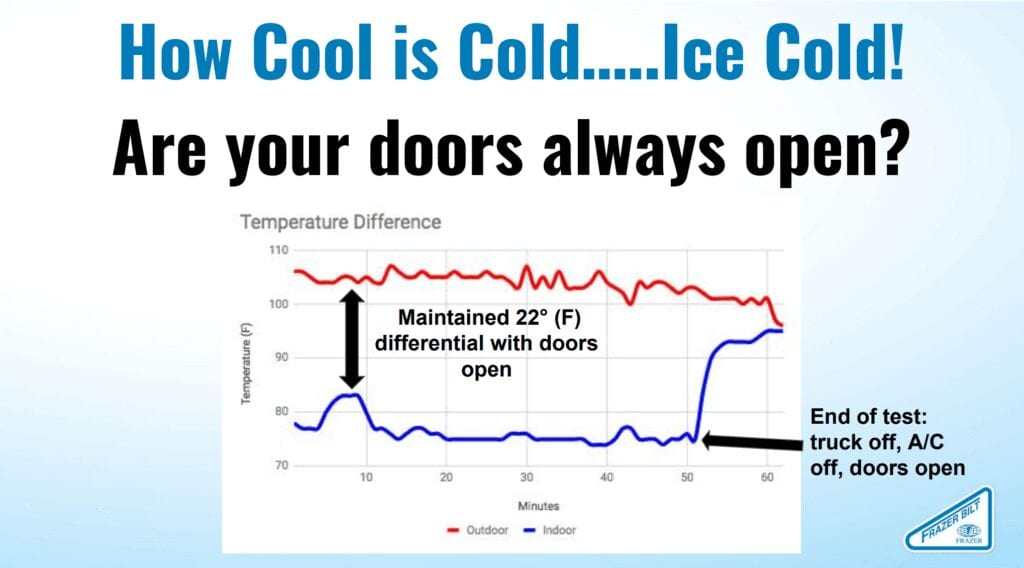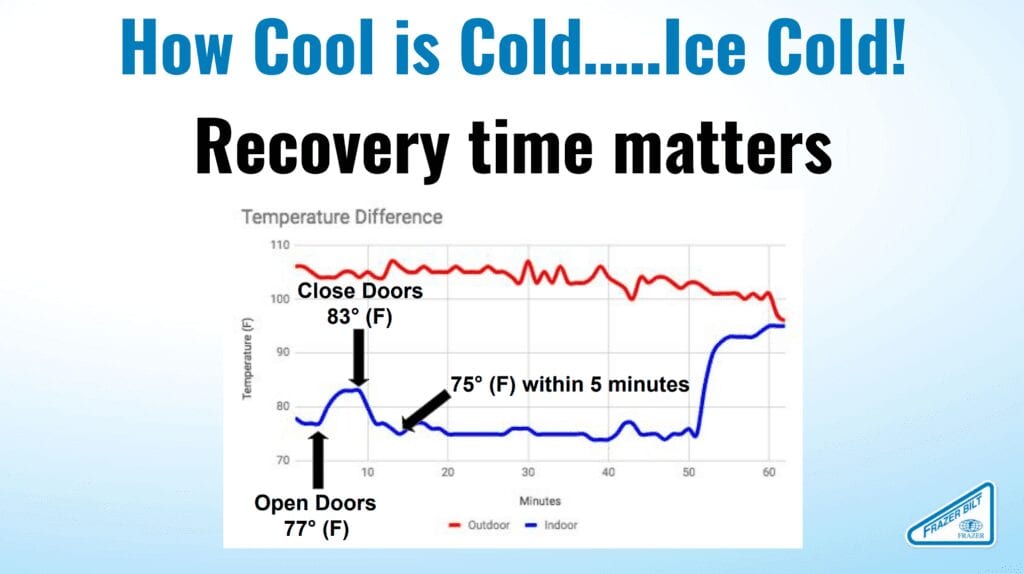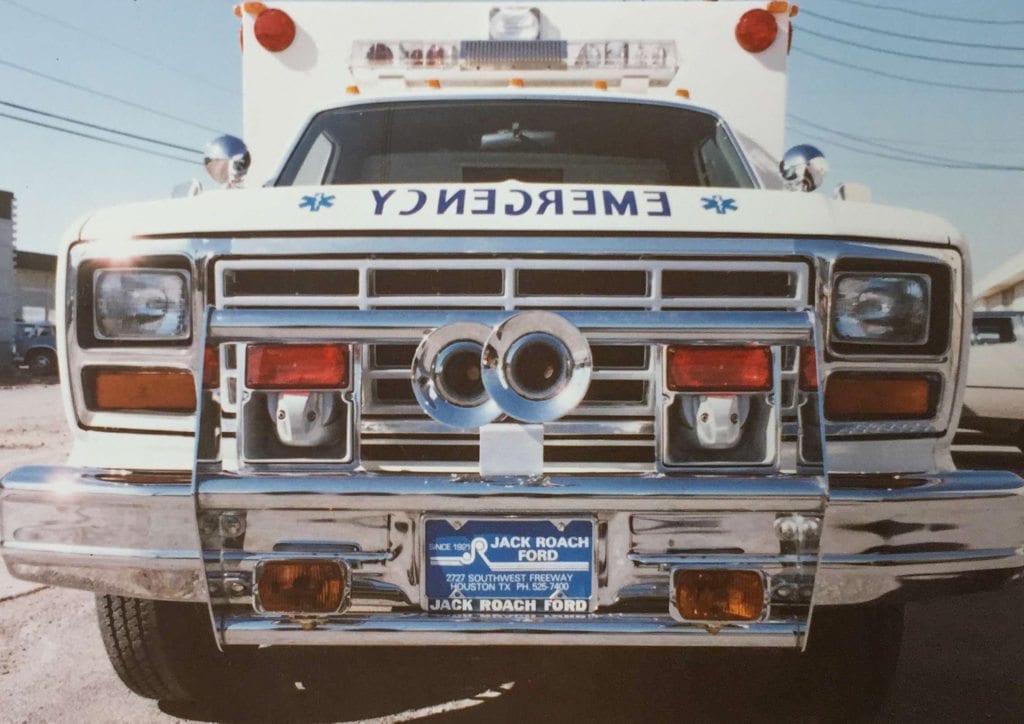Air conditioning is essential to a safe environment for you and especially your patients. Along with fancy electrical systems, ambulance air conditioning usually sounds great during the sales pitch, but frequently doesn’t perform as advertised. Here’s how you can avoid “drip air.”
Automotive vs. Self-Contained Applications
The mechanical process of air conditioning works the same for self-contained and automotive applications. But the similarities pretty much end there.
Automotive Air Conditioning
The AC in your car or truck is sized to try and cool an area that can easily reach temperatures over 150 degrees on a hot and humid summer day. There’s a reason why we don’t leave kids and pets in hot cars; cars and trucks basically become hot houses in a very short span of time.
Cooling a small passenger space down quickly from temperatures that extreme is a priority for the driver and occupants, and most vehicles can handle that job sufficiently. But that cooling capacity comes at a cost. Per the U.S. Department of Energy:
Running your car’s air conditioning is the main contributor to reduced fuel economy in hot weather. Its effect depends on a number of factors, such as the outside temperature, humidity, and intensity of the sun. Under very hot conditions, AC use can reduce a conventional vehicle’s fuel economy by more than 25%, particularly on short trips.[1,2,3] The AC’s effect on hybrids, plug-in hybrids, and electric vehicles (EVs) can be even larger on a percentage basis.[2]U.S Department of Energy – Office of Energy Efficiency and Renewable Energy
If it feels like your ambulance is burning through fuel at a higher than normal rate during the summer, that’s because it is.
An Ambulance is Not a Car
It’s MUCH bigger! Automotive AC relies on the engine and electrical system of the vehicle to provide all required power. A conventional ambulance takes that same system, adds the massive volume of a patient compartment to the equation, and expects everything to stay cool.
Since many ambulance manufacturers add an additional condensing unit to the system in an attempt to cool a much larger space, the power requirements and resulting fuel consumption start to rapidly increase.
These automotive-based systems also rely upon a large amount of air to blow over the condenser as the truck moves down the road. If you have to keep your unit at high idle to provide power for the module, the extra heat generated underneath the hood impacts the AC system as well.
Bottom line, it is an expensive, power hungry, inefficient, and ineffective alternative the industry has lived with for decades.
The Frazer A/C Solution
If you have an 1800 square foot house in the South, you generally have 3 ton air conditioner. Frazer provides a 1 ¼ ton AC for your 112 square foot patient module. That’s enough to cool a 900 square foot apartment in Houston! You win!
Our air conditioner runs off 120V provided by our on-board or under hood generator. Oh, and the drivers get that truck AC all to themselves.
A massive 518CFM fan cools the condenser. Humidity is extracted from the air and pours out in buckets. You set your thermostat to a comfortable temperature and forget it. Recirculated air quickly cools the interior, and recovery time from working at a scene is fast. Forward facing supply vents put the air onto the things that matter — you and your patient.
When you’re done with a call, plug in at the station for year round temperature control. It works just like it would at home – set the thermostat and walk away. You’ll come back to an already cooled (or heated) module. Idling on scene (or even turning off your vehicle with the Onan application) will have no impact on the cooling capacity of a self-contained AC unit.
The Numbers That Matter
Delta. Like the Airline, But Different.
Our self-contained units produce a 34 degree differential from outside to inside air temperature. On a hot and humid 104 degree day, that means it will be a cool and comfortable 70 degrees inside our modules. That 34 degree number, sometimes referred to as the delta, is a critical one.

Of course that’s with the doors closed. What happens if someone leaves the doors open? Glad you asked! Our air conditioner can maintain a consistent 22 degree delta even with the doors wide open.

Recovery Time
Since you have no idea how long you’ll end up on scene, or how long someone might leave the doors open in the patient compartment, recovery time matters. And once again, the massive airflow and cooling capacity of our self contained AC system sets us apart. After the doors were closed, recovery time was 5 minutes. No “drip air” here.

So we get your module cold. We keep your module cool on scene. And when you’re ready to go we’re ready to get it cold again.
Warranty
Our self-contained units feature our legendary 4 year warranty. Most automotive systems come with 3 yr/36,000 mile coverage. You’re likely to blow through 36,000 miles in 12-18 months at most services so forget the three years. Also, if there is an issue to contend with, troubleshooting is far easier on a self-contained unit. And, if necessary, our whole AC can be completely swapped out in about 45 minutes. Try that with a truck-based system.
A Little History
We did automotive based AC long ago in our oilfield equipment because that’s what our customers knew. When big 120V generators became available they wanted 120V air conditioners. It was an amazing change in efficiency and reliability!

It’s been almost 40 years since Frazer first prototyped the self-contained air conditioning system in our EMS vehicles and close to 50 since the first time we used it in our oilfield equipment. So we’ve known almost a half century that automotive AC doesn’t provide the performance our customers have grown to expect from our products.
That is what we want to do for you. Please let us show you a true difference in the quality and reliability of 120V air.
If you would like to learn more about the Frazer difference, please give one of our Sales Team a call at 888-372-9371. You can click here to watch a short video about our AC. Or you can click here to request more info.

